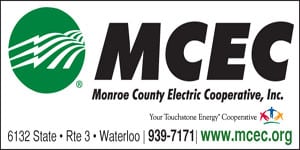The importance of media literacy
(Editor’s note: This is the first of a multiple-part series centering on the big questions associated with media literacy.)
Multiple studies estimate the average U.S. citizen spends 4-8 hours consuming media daily. The figures include varying types of media used for various purposes including work, entertainment, education and gathering information.
Especially in light of the Internet becoming pervasive in the past 20 years, and then becoming handheld with constantly-improving “smart phone” technology, the amount of information a person is exposed to on a daily basis can make it difficult for a consumer to determine which messages are important, and more importantly, what is credible.
The dilemma is especially pertinent to the journalism industry.
Social media platforms such as Facebook and Twitter provide a means for dissemination of news and opinions, although the lines are becoming blurred as to which is which.
A Pew Research Center study presented U.S. adults with a list of statements like those they may see in the news and asked them to classify the statements as fact or opinion. Only 26 percent – just over one-fourth – of respondents correctly identified all factual statements as being able to be verified by objective evidence. A total of 35 percent correctly identified all opinion statements as those based on beliefs and values of an individual.
Specifically relating to print newspapers, over one-fourth of American readers cannot differentiate the paper’s news content and its designated opinion page, per an article in the Columbia Journalism Review.
During the four years of the Trump Administration, the term “fake news” became part of the American vocabulary. While this term was originally used to describe information one might not view as trustworthy, it now can also be used as a means to write off information one does not agree with.
At the same time, Facebook is widely cited as a news source, with many believing its credibility parallels coverage from the Associated Press or Reuters.
A 2014 piece published in the Columbia Journalism Review mentioned the blurred lines between advertorials, or advertising content designed to look like print coverage, and “contributor networks” which appear as a freelance article but in reality are subject to little editorial oversight and fact checking.
The concept of disinformation is at the forefront of the publics’ mind, with even former President Barack Obama stating in a recent speech at Stanford University that it is a “threat to democracy.”
Yet, even with the awareness of disinformation and some social media platforms attaching “fact check” and “misinformation” labels to questionable content, it can still be difficult to determine which pieces of information should be viewed with skepticism.
This is where the concept of media literacy comes into play.
With the overwhelming amount of information and uncertainty about the credibility of sources, there is a movement to create media literacy classes as required public education coursework in the United States. There are also organizations dedicated to informing the general public about the role of media in their lives and how to cope with the barrage of messages being sent through a wide variety of media.
“(Media literacy) is about building skills, knowledge, practices toward mindful media consumption and production,” Illinois State Chapter Leader of Media Literacy Now, an organization that promotes instilling media literacy policy, Michael Spikes said. “We think about how media can influence, the role media has in our lives, how we can control the way media can influence and so on.”
Given how the internet quickly allows media to be disseminated, Spikes said media literacy is perhaps more important now than ever.
“There is, I think, a greater responsibility on all of us – whether young people or adults – in what we choose to help inform our ideas about the world and also what we choose to pass along to other people because it’s all so easy for us to share lots of pieces of media,” Spikes said. “Media are pretty powerful tools, and we think that it’s important for everyone to realize the responsibilities that come with that power.”
Part of tapping into this responsibility is being news literate, Spikes said.
The News Literacy Project said media literacy includes determining a source’s credibility, identifying if information is fact or opinion and “using the standards of authoritative, fact-based journalism to determine what to trust, share and act on.”
“At a time when misinformation threatens both our civic life and our public health, we endanger the futures of the next generation and the viability of our democracy overall if we don’t provide young people with the knowledge and skills to find fair, vetted information and reliable sources,” Senior Director of Professional Learning for the News Literacy Project John Silva is widely quoted as saying.
News literacy is not only championed as a means through which to help individuals find reliable sources, thereby helping to combat the spread of misinformation, proponents also argue it can propel journalists to better serve the public.
By understanding the functions of journalism and how a newsroom works – a topic the Republic-Times will explore in more detail in future coverage – citizens can engage in increasingly productive conversations with their hometown news sources.
The Republic-Times has covered Monroe County and the surrounding area since 1890.
“Just as it is often said that in a democracy citizens get the government they deserve, in the 21st Century newly empowered consumers will get the journalism they deserve,” Richard Hornik, director of overseas partnership programs for the Center for News Literacy at Stony Brook University, wrote.
In coming installments, learn more about how journalism – when done correctly – is necessary for democracy, how to evaluate if a source is reliable, how local news functions and more.
(With additional reporting from Scott Woodsmall)
For other articles from this series, click the corresponding link to read about media mistrust, how to spot fake news or the importance of local news coverage.








